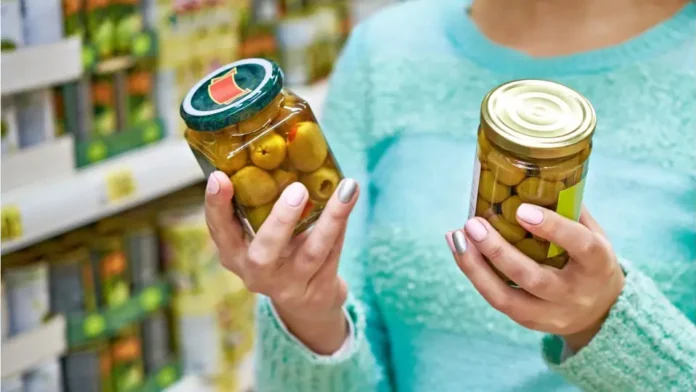
Buyer Beware: Many foods are being misrepresented in both North America and Europe
Newer in Europe, these reports have been reaching the public for several years in the US and Canada. In the European Union, food products falsified most often are olive oil, fish and fish products, poultry, honey, meat and meat products. The misrepresentation of food is growing at the rate of 20 percent each year. In Lithuania, food inspection at this level began actual work just this fall, due to a previous lack of proper mechanisms.
There are several ways that food is falsified – ingredient substitution, dilution, omission, additives, misrepresentation on labels. Food producers and importers must assess the risk of using these methods not only for the fines they may incur, but also possible harm to consumers, the ecosystem and the economy.
In the EU, the most frequent form of falsification is misrepresentation on labels. For example, labelling olive oil as first press while it is actually of lesser qualitiy. Labels also misrepresent the origin of the product, its ingredients and their amounts, as well as its shelf life. Brands are also falsely used to mislead purchasers, for example, this year a Bulgarian firm imported rice from Ukraine and Egypt, and sold them to third parties under the famous Australian rice brand SunRise.
The second most frequent abuse is ingredient manipulation, when lower-quality elements or fillers are added to more expensive products. And third is the manipulation or complete lack of documentation accompanying products.
A majority of Canadians are also concerned about food products that are either counterfeit, adulterated or otherwise misrepresented. A study called Food Fraud and Risk Perception found that 63% of people surveyed are concerned about food fraud – such as non-organic or non-local products labelled as such, while 40% said they have purchased a fraudulently labelled food item. Seafood and fish are in the most troublesome category, with more than a quarter of respondents saying they had purchased counterfeit or adulterated products at some time. It is followed by liquids such as oils and wine (20.9%); fruits and vegetables (13.9%); deli meats (11.6%); and bakery goods (9.3%).
Many respondents (42.8%) said they discovered information about fraudulent food products via social media, while 35.7% said they used their own research and 19.1% found out through a public recall. Asked to identify where they purchased a fraudulent food item, 65.9% of respondents said at a regular grocery store, while 12.2% said a non-traditional food retailer, 9.8% – a farmers’ market and 2.4% – a restaurant or food outlet.
According to the book Real Food/Fake Food: Why You Don’t Know What You’re Eating and What You Can Do About It by Larry Olmsted, there are many items that are not what you think they are. He tells us that extra-virgin olive oil is often stripped of healthy ingredients and replaced with dangerous substitutions, diluted with cheaper oils like peanut and soybean—which is problematic because both can cause severe allergic reactions.
In a study done by nonprofit marine conservation group Oceana, he notes that samples were taken from New York sushi restaurants and it was found that 100 percent of them served fake fish. 94 percent of the time consumers ordering white tuna in sushi get “escolar”, a type of mackerel, which is known for causing diarrhea. 38 percent of all restaurants sampled and 74 percent of all sushi eateries, mislabelled the species of fish served.
Real Parmesan cheese is an expensive delicacy from Parma, Italy. A 2016 FDA study that found that products marked in the US as “100 percent Parmesan” are often cut with cheaper cheese or even wood pulp. He suggests looking for a “Made in Italy” stamp if you’re looking for the real deal.
There are no standards right now determining what does and doesn’t actually qualify as “honey”. So places can sell honey diluted with cheap sweeteners, like high-fructose corn syrup, cane sugar and beet sugar. Olmstead said to also be careful when buying honey from China as the country has a history of adulteration.
Sadly, ground coffee is often cut with cheaper substances. Researchers have found twigs, roasted corn, ground roasted barley, and even roasted ground parchment. “Adulteration is more extreme in powdered instant coffee, where substances found have included chicory, cereals, caramel, parchment, starch, malt, and figs.” So beans are best. In its 2014 report to Congress, the Congressional Research Service noted that manufacturers added sawdust and leaves from other plants to make some teas last longer. In dry spices, turmeric has been found to contain corn. Nutmeg is sometimes cut with pepper. Oregano can actually contain flaked weeds.
Manufacturers aren’t required to list the percentage of each ingredient on the packaging of fruit juice, and apple juice is much cheaper than juices like pomegranate or blueberry. The vast majority of apple juice sold in the United States is from Chinese-made concentrate, which has repeatedly been found to contain banned pesticides and other chemicals.
Apparently it’s safest to avoid buying red snapper altogether, almost always faked in the U.S., with cheaper fish being passed off in its place. It has many different imitators, including mercury-rich tilefish, which is on the FDA’s do-not-eat list for sensitive groups such as children and pregnant women. Finally, don‘t be fooled by truffle oil. Almost no truffle oil is real. It is actually a cheap chemical cocktail from a laboratory. The truth about truffle oil, while kept from consumers, is well known in the restaurant business.
With news from alkas.lt, globalnews.ca, canadiangrocer.com



























